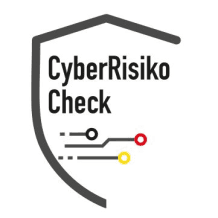Digital forensics is a significant and multifaceted field that deals with the identification, analysis, and preservation of digital traces. Many ask: What exactly is digital forensics? How does this method work in practice, and why is it of such great importance in today's interconnected world? This text highlights the backgrounds, principles, and applications of digital forensics and provides answers to central W-questions.
Introduction to Digital Tracing
The digital world leaves countless traces that can often provide crucial clues in criminal investigations, corporate inquiries, or civil disputes. It is not only about the technical analysis of data but also about the interpretation of this information in the context of a case. Digital forensics involves the systematic collection, examination, and evaluation of digital evidence.
Important questions that arise in this field include: What is meant by digital tracing? What tools and methods are used to ensure the integrity of digital evidence? How can modern technologies help decipher complex data structures?
Basics and Definitions
Digital forensics, often referred to as computer forensics, is an interdisciplinary research and working field that combines technical know-how with legal aspects. It encompasses different subfields such as the analysis of computers, mobile devices, networks, and even cloud storage solutions. At its core, it is about preserving data without making any alterations to the original data during the investigation process.
What is digital forensics? This fundamental question often arises among users and investigators. Even more important is how the procedures and methods of digital tracing can be applied in various areas: in business to combat fraud, in cybercrime for uncovering attacks, and in criminal investigations to secure and present evidence in court.
Goals and Areas of Application
Digital forensics primarily serves the identification and recovery of information stored on digital devices. The goal is to make the sequence of events—whether in a hacking incident or internal misconduct—traceable. Central questions include:
• What were the first signs of a security-related incident?
• What data was manipulated or deleted?
• How can potential sources of attack be identified and isolated?
The areas of application for digital forensics are broad, ranging from criminal investigations to internal audits in companies. Another important aspect is the prevention of cyberattacks. Forensic investigations can identify security gaps, enabling preventive measures to be developed and implemented.
Methods and Techniques of Digital Tracing
The variety of techniques and methods in digital forensics is impressive. Typical workflows initially involve the collection of digital evidence without altering the data set—this is often referred to as forensically secure imaging. Copies of all relevant data are made to later conduct analyses undisturbed.
Further significant steps include:
Data preservation and copies: This ensures that all data, from deleted files to log files, is accurately documented and secured.
Analysis and reconstruction: Special software tools are used to reconstruct deleted or hidden data. These tools must be designed to maintain the digital footprint completely and faithfully.
Reporting and evidence presentation: The ultimate goal is to prepare the results so that they can be used in court or in internal investigations. The documentation is meticulously created and must be traceable and reproducible.
W-Questions in Focus: How Does Digital Forensics Work?
A central question is how digital forensics is implemented in practice. What steps are necessary to secure and analyze digitally recorded information completely and unchanged? First, the affected storage device—be it a computer, smartphone, or server—is isolated to prevent any interference with the original state. Then, a detailed examination of the system occurs, where all potential traces are identified.
Important W-questions frequently posed by experts include:
• Why is it crucial to keep original data unchanged?
• How can changes to the original data be prevented?
• What are typical pitfalls that can occur during data preservation?
The answers to these questions not only shed light on technical processes but also highlight how essential careful planning and execution of investigations is.
Legal Foundations and Challenges
Another essential aspect of digital forensics is the legal framework. Unlike traditional evidence procedures, where physical items are often examined, with digital traces, the primary question is how digital evidence collection can be made legally permissible.
Frequently asked questions include:
• How is the integrity of digital evidence ensured?
• What happens if evidence is challenged due to improper handling?
• How can it be proven in court that digital data has not been manipulated?
The answer to these questions is based on strict adherence to protocols and standards. Professionals work according to recognized guidelines that consider both technical and legal aspects. This guarantees that digital evidence can also hold up in court. In addition to protocol adherence, data protection also plays a significant role. All procedures must be designed in such a way that personal data is protected and no unlawful data processing occurs.
Technological Developments and Future Perspectives
With the rapid advancement of modern technologies, digital forensics is always faced with new challenges and opportunities. The influence of artificial intelligence and the increasing importance of cloud services fundamentally change the working environment in forensic investigation.
Questions such as "How does the development of AI-driven analytical tools affect digital forensics?" or "What role do big data and machine learning play in identifying cyberattacks?" are becoming increasingly prominent. These developments enable patterns in vast amounts of data to be recognized more quickly, thereby extracting critical clues. At the same time, however, the risk also increases that attackers will use sophisticated methods to obscure or delete digital traces.
Overall, it is expected that the future development in digital forensics will require even more interdisciplinary approaches. Technical, legal, and ethical aspects must be closely intertwined to optimize both preventive measures and the investigation of crimes. Researchers and practitioners are therefore continuously working on the development of new tools that allow for even faster and more reliable analysis.
Case Studies and Practical Examples
To transfer theory into practical context, looking at case studies where digital forensics has been successfully applied is worthwhile. A classic example is the investigation of cyberattacks on companies or governmental institutions. In such incidents, all digital traces are initially secured and then evaluated using specialized analytical tools. This meticulous work often leads to identifying the perpetrators and restoring damaged data.
A typical question in this context is: Why is it important to act immediately in the event of a cyberattack and capture all data? Timely response and thorough documentation are essential, as even the smallest changes to the system can cause irreversible damage. Another aspect that is repeatedly highlighted in various cases is the importance of interdisciplinary collaboration among IT experts, lawyers, and investigators. Only when all parties contribute their expertise can a comprehensive clarification and preventive security strategy be developed.
Impact on Businesses and IT Security
Digital forensics also plays a central role in business. Companies increasingly face challenges such as cybercrime, data leaks, or insider threats. Regular checks of IT infrastructure and the implementation of forensic procedures can help identify security gaps early and take countermeasures.
Important questions often asked in this context include:
• What should companies do to protect themselves from cyberattacks?
• How can the internal IT department be optimally integrated into forensic analysis?
• What measures are necessary to be prepared in case of an emergency?
The answers to these questions often involve a




